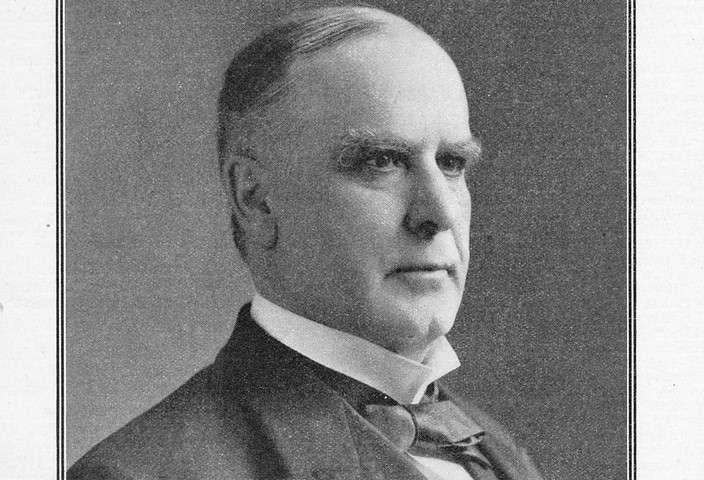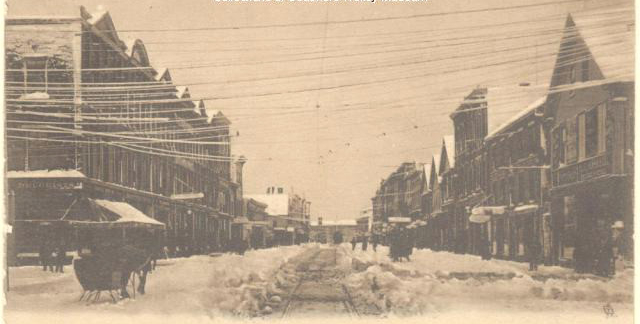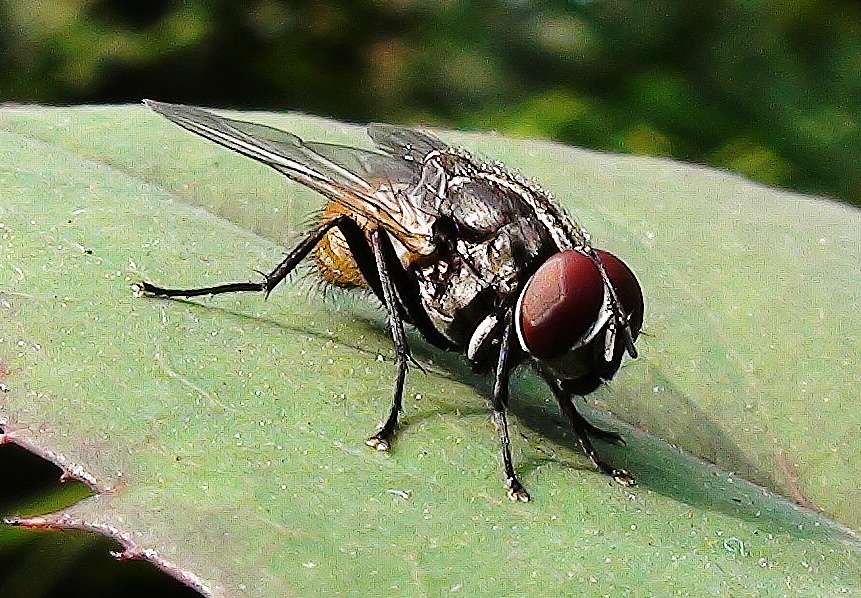
William McKiinley
William McKinley
In a speech given at the Pan-American Exposition, in Buffalo, New York, on September 5, 1901, (one day before he was shot by the psychotic anarchist Leon Czolgosz), the 25th President William McKinley (1843-1901) stated that “Isolation is no longer possible or desirable….The period of exclusiveness is past.”
During his first term in office, McKinley would be faced with the challenges of the Spanish-American War in Cuba, an armed insurrection in the Philippines and the Boxer Rebellion in China ; and the annexation of Puerto Rico, Guam, and the Hawaiian Islands. But he showed gifts of leadership that were both firm and quietly unobtrusive.
His main political goal, one that had pre-occupied him since he was first elected to the U.S. House of Representatives in 1876 as a Republican from Ohio, was the protective tariff and, after an exhaustive study of its intricacies, concluded that protectionism benefitted both American industry and the working people, guarding them from the unregulated cheap foreign goods.
Within 14 years, his McKinley Tariff Act of 1890 attracted much criticism but gave Congressman McKinley additional fame throughout the country. The tariff imposed rather high rates on agricultural and manufactured products from abroad yet, strangely, raw sugar was not taxed.
Interestingly, a reciprocity agreement on the tariff provided elbow room for any sitting president to impose additional duties on goods from nations if they were extorting extra duties on our exports .
At the 1888 Republican Convention, McKinley attracted the attention of the multi-millionaire manufacturer Mark Hanna (1837-1904) whose strategic talents and personal wealth would help McKinley win the White House in 1896 and 1900. As with many such behind-the-scenes individuals, Hanna’s own rise to power would make a fascinating case study in the political science realm.
William McKinley Jr. was born January 29, 1843, in Niles, Ohio, to William (1807-1892) and Nancy Allison McKinley (1809-1897). Being the seventh of nine children, he had three brothers and five sisters. His father operated an iron foundry but the business started floundering when McKinley was attending Allegheny College, in Pennsylvania, necessitating his withdrawal to go to work as a schoolteacher and store clerk to help support the family.
When the Civil War started, McKinley joined the 23rd Ohio Regiment and moved up its ranks to the post of Major under the command of Rutherford B. Hayes, who called McKinley, because of his performance during some very bloody skirmishes, “one of the bravest and finest officers in the army.”
When the war ended, McKinley studied law, was admitted to the Ohio bar and shared a partnership in the city of Canton with an elderly judge who soon retired and handed over his practice to the younger man. He moved with assurance in society and soon became interested in politics, campaigning for his former commanding officer Hayes (who by now was a close friend) when the older man successfully ran for governor and later president.
As an eligible bachelor in Canton society, McKinley attracted the ladies but set his sights on the beautiful and well-connected Ida Saxton (1847-1907) who was quite attracted to the young lawyer in return.
They married in January 1871, and a baby girl, Katherine, was born on Christmas Day of that year. They were a very happy and financially prosperous couple with a wonderful future in the works.
But then tragedy struck . Just before their second daughter was born in 1873, Ida’s mother, to whom she had been very close, died; the baby girl, also named Ida, was born but only lived a few months; and finally in 1875, their daughter Katherine died at the age of four from typhoid.
Already having suffered a physical and mental breakdown when she lost her mother and baby daughter, Ida had taken great comfort in Katherine and might have recovered most of her health, but losing Katherine, too, resulted in Ida being an invalid for the rest of her life, clinging to her husband with brief periods of remission during which she went to social gatherings with him. Among the ailments were epilepsy and later phlebitis.
One of her hobbies was crocheting bedroom slippers and she made several thousand pairs .
She and her husband also opened their homes to children from both sides of the track who needed a place to stay during daylight hours and always provided them with lunch, both when residing in Canton and later in Washington D.C., on up to and including the White House years, and she became known as “Auntie McKinley.” It was believed by friends and family as a way of sublimating her grief at the loss of her daughters by giving attention and affection to other children who needed it.
However, she did encourage her husband’s political career even as she was totally dependent on him.
For reasons of space, I now move to the aftermath of when McKinley was shot by Czolgosz on September 6, 1901. The president was beginning to improve a few days later but then gangrene set in around the wound in his stomach and McKinley died on September 14, his wife by his side and his last words to her were those of a favorite hymn, “Nearer My God to Thee, Nearer to Thee.”
Leon Czolgosz was tried quickly and sentenced to death in the electric chair on October 29, six weeks after McKinley’s death.
McKinley’s first vice-president was Garret Hobart (1834-1899), a very shrewd New Jersey lawyer and politician who became a very close friend while in office but he died before the first term ended.
At the 1900 Convention, McKinley allowed its leaders to pick his running mate, Theodore Roosevelt; McKinley accepted him but the two men had a wary dislike for each other.
Then fate intervened and Teddy was president until 1909, when he was succeeded by his own hand-picked choice, William Howard Taft, their stories for later.











 (NAPSI)—The winter holidays have ended, and spring is in sight. As the days start to lengthen, it is a good time to tend to your overall health and well-being, including your mental health, by practicing daily acts of self-care.
(NAPSI)—The winter holidays have ended, and spring is in sight. As the days start to lengthen, it is a good time to tend to your overall health and well-being, including your mental health, by practicing daily acts of self-care.


 Allergy season doesn’t have to mean misery if you heed a few hints for your home.
Allergy season doesn’t have to mean misery if you heed a few hints for your home.
